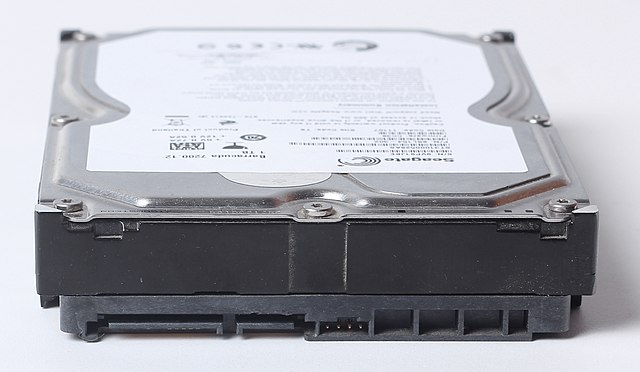Two-dimensional magnetic recording
Two-dimensional magnetic recording (TDMR) is a technology introduced in 2017 in hard disk drives (HDD) used for computer data storage. Most of the world's data is recorded on HDDs, and there is continuous pressure on manufacturers to create greater data storage capacity in a given HDD form-factor and for a given cost. In an HDD, data is stored using magnetic recording on a rotating magnetic disk and is accessed through a write-head and read-head. TDMR allows greater storage capacity by advantageously combining signals simultaneously from multiple read-back heads to enhance the recovery of one or more data-tracks. In this manner, data can be stored with higher areal-density on the disks thus providing higher capacity in each HDD. TDMR is a read-back technology and thus applies equally well to future recording (writing) technologies such as heat-assisted magnetic recording (HAMR) and microwave-assisted magnetic recording (MAMR).
General concept for TDMR using multiple read elements
First implementation of TDMR in a product (2017)
A hard disk drive (HDD), hard disk, hard drive, or fixed disk, is an electro-mechanical data storage device that stores and retrieves digital data using magnetic storage with one or more rigid rapidly rotating platters coated with magnetic material. The platters are paired with magnetic heads, usually arranged on a moving actuator arm, which read and write data to the platter surfaces. Data is accessed in a random-access manner, meaning that individual blocks of data can be stored and retrieved in any order. HDDs are a type of non-volatile storage, retaining stored data when powered off. Modern HDDs are typically in the form of a small rectangular box.
A partially disassembled IBM 350 hard disk drive (RAMAC)
2.5-inch hard disk drive with cover removed
The end of a 3.5 inch hard disk drive with a Serial ATA (SATA) interface
Destroyed hard disk, glass platter visible






